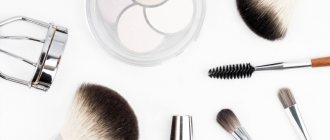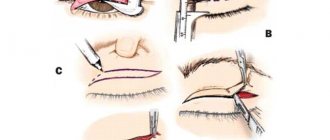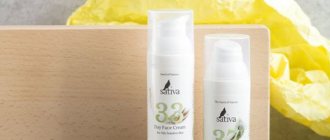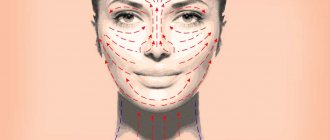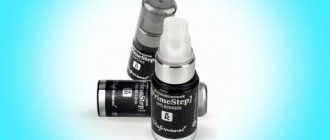What is an Asian eye shape?
The Asian eye shape is a shape characteristic of representatives of the Mongoloid race. Being a dominant feature, the incision is characterized by a narrowed palpebral fissure, the presence of skin folds in the corner of the eye (epicanthus) and the almost complete absence of the so-called supraorbital folds - a double fold on the upper eyelid.
The Asian cut differs from the typical European cut by thickened eyelid skin, the presence of a large amount of orbital fat and high-set eyebrow arches. The Asian structure of the palpebral fissure is transmitted genetically, but can also occur in people of other races. As a rule, this is the result of previous injuries, as a result of which the epicanthus was formed, age-related changes, or in people suffering from Down syndrome.
Blepharoplasty for Asian eyes. Operation
Preparation
Before the operation, the patient must undergo preparation, which includes:
- Consultation with a therapist and ophthalmologist (for admission to blepharoplasty);
- Consultation with a cardiologist, gastroenterologist and oncologist if the patient has chronic diseases (for admission to blepharoplasty);
- Consultation with a surgeon before surgery;
- Consultation with a surgeon before the operation, in order to determine the scope of surgical intervention and give the patient a referral to specialized doctors, as well as laboratory examination and hardware diagnostics;
- Taking tests;
- Passing hardware diagnostics.
Analyzes
Before the operation, the patient must undergo hardware and laboratory examination. This is done to check the state of his health and identify forms of diseases that may be on the list of contraindications in Asian blepharoplasty.
Before the operation you should undergo tests, namely:
Blood tests for: Infectious diseases (RW and HIV);- Venereal diseases;
- Australian antigen HBS (hepatitis C and B), HSV;
- For sugar;
- Clinical analysis;
- Biochemical analysis;
There is the possibility of additional tests, if, of course, there are grounds for this.
Hardware Research
Must include the following diagnostic types:
- Electrocardiogram (ECG);
- Ultrasound examination of internal organs;
- Electroencephalogram (EEG);
- Fluorography or x-ray.
Tips and tricks
Before surgery, the patient should follow several tips and recommendations:
- Stop drinking alcohol and cigarettes within a few weeks;
- Three weeks before surgery, you must stop using aspirin, as well as other drugs that are considered blood thinners;
- The day before the operation, you must stop eating solid food, and in the evening, do a cleansing enema;
- On the day of surgery, you should shower, then put on sterile clothing and go to the operating room.
Operation process
During surgery, the task of which is considered to be the elimination of the so-called Mongolian fold, the patient is put under general anesthesia; local anesthesia can also be used.
The surgeon makes an incision with a scalpel on the upper eyelid, from the corner of the eye along the ciliary line, and then removes excess skin and fat deposits. The goal of incision blepharoplasty is to form a double supraorbital fold. Finally, cosmetic sutures are placed on the incision, which dissolve on their own after a certain period of time.
If the patient was given deep anesthesia, which is a very rare case, he needs time to recover from this anesthesia. It is forbidden to drink for several hours after blepharoplasty, as a gag reflex may form.
Important: After surgery, no traces remain in the areas where the sutures are located.
Postoperative (recovery) period
The recovery period generally lasts about several weeks, depending on the body and the method of surgery.
During recovery, patients need to follow special advice:
- Limit the use of cosmetics;
- When going outside, wear sunglasses and never take them off;
- If swelling occurs, do not use ointments, but rather apply ice;
- Completely remove smoking and alcoholic beverages from your daily routine;
- Avoid eye irritants;
- You should stop reading for a while;
- For dry eyes, use special drops;
- Avoid contact lenses for a while; they can irritate the mucous membranes of the eyes;
- Remove physical activity.
The result of blepharoplasty
A very high-quality operation for Asian eyes will not require a second operation, because the result obtained here can last a lifetime. To avoid all sorts of complications, you must strictly follow the surgeon’s recommendations and go through a full recovery period.
Complications
After surgery, patients may experience complications, namely:
- lacrimation;
- Dry eyes;
- Dehiscence of cosmetic seams;
- Eversion of the lower eyelid;
- Irritation of the mucous membrane of the eye, that is, burning;
- Conjunctivitis;
- Hematomas.
If you find one of the above complications, you should not panic, because it is very easy to solve such problems; they will disappear on their own after a short period of time.
If blepharoplasty was not performed very well, then patients may experience the following complications:
- Blepharoptosis, or drooping eyelid;
- Eye asymmetry;
- Poor healing of postoperative scars or scars;
- Constant lacrimation;
- Displacement of lacrimal openings.
How is Asian eyelid surgery performed in Moscow?
In most cases, I perform blepharoplasty of the eastern eyelids under local anesthesia, but there are cases when this is not enough and general anesthesia is required.
The entire plastic surgery can last from one to two hours.
The peculiarity of this area of blepharoplasty is that the surgical intervention consists of three main mini-operations
Removal of the fold of the inner corner of the eye or epicanthus . The sutures are hidden along the new line of the canthal angle.
Reduction of the upper eyelid . It is carried out by eliminating part of the subcutaneous fatty tissue or hernias above the eyes. As a result, the eye becomes visually larger. In older women living in Asian countries, in order to achieve a more visible change and create a beautiful European eye shape, more skin has to be cut off during the procedure.
Formation of a fold in the upper eyelid . To make a new fold, the plastic surgeon securely fixes it using a neat cosmetic suture. (The peculiarity of the Asian eye shape is that it is distinguished by the absence of this fold)
How is the rehabilitation going?
Rehabilitation proceeds in the same way as with classic blepharoplasty.
The swelling and bruising intensify in the first days, and then within ten days they practically disappear.
Since the operation to change the eastern type of eyes is quite serious, it is very important to conscientiously follow the surgeon’s recommendations during the rehabilitation period. This means that the first two weeks you need:
- Avoid physical activity
- Do not visit the bathhouse, sauna or solarium
- Do not watch TV for a long time or sit in front of the computer
- Don't drink alcohol
- Don't smoke and so on.
Full recovery occurs 1.5 – 2 months after surgery.
Are complications possible after Asian eyelid surgery?
In general, complications do not arise, but it is possible that the patient may violate the rules of behavior during rehabilitation, which will lead to:
- Increased swelling and hematomas
- Seam divergence
- Bleeding
- Scar dehiscence
- Dry eyes and so on.
Rehabilitation
In the case of plastic surgery under general anesthesia, a stay in the clinic of up to a day may be required; with local anesthesia, the duration usually ranges from two to twelve hours. The time is determined by the patient’s well-being.
- At first, it is recommended to apply a cool compress to the eyelids to reduce swelling and prevent the formation of hematomas.
- Avoid exposure to sunlight.
- It is recommended to sleep only on your back during the entire postoperative period.
- Avoid physical activity.
- Your doctor may prescribe eye drops that have a moisturizing and anti-inflammatory effect.
- Do not read, do not use PC.
- After a week, physiotherapeutic procedures may be required, which will speed up recovery, as well as laser therapy.
It is very important to follow all doctor's orders and come to your appointment on time.
Before deciding to undergo blepharoplasty for Asian eyes, you should carefully weigh the pros and cons, because surgery is always a health risk.
Preoperative preparation
Before the operation, the following measures are necessary:
- Consultations and examination by specialists - plastic surgeon, therapist, ophthalmologist, cardiologist and anesthesiologist;
- Passing all laboratory tests;
- Undergoing a hardware examination of the body - ECG, ultrasound, etc.
In addition, the patient must strictly adhere to the following recommendations:
- 3 weeks before the correction, stop taking aspirin , hormonal drugs and all blood thinning medications;
- 1.5 - 2 weeks before surgery, stop taking alcoholic beverages and tobacco products .
Preparatory stage
Necessary:
- Get advice from related specialists - an ophthalmologist and a therapist to make sure there are no contraindications.
- Conduct laboratory tests.
- Stop drinking alcoholic beverages and blood thinners (one week before the procedure).
- Do not eat before surgery (12 hours before).
Postoperative period
On average, the postoperative period lasts 2–3 weeks, during which the specialist’s recommendations should also be strictly followed.
- Completely eliminate heavy physical activity, including strain on the eyes, for example, reading while lying down or in poor lighting.
- Avoid using contact lenses and cosmetics applied to the eyelids.
- Protect the eye area from ultraviolet radiation (wear sunglasses).
Important to remember! You cannot try to eliminate any unpleasant symptoms in the postoperative period on your own, especially with the help of traditional medicine.
Dry eyes, swelling, tingling, burning, etc. symptoms should be a reason to contact a specialist. Otherwise, complications may develop.
Eye makeup
Let's take a closer look at how to do Korean makeup for European eyes.
- First, apply a primer to your eyelids so that the shadow does not roll into the crease of your eyelid.
- Then you will need light shadows (white can be). They must be applied to the entire eyelid, paying special attention to the inner corner.
- Next, using a fluffy blending brush, apply light peach or ash pink eyeshadow across the middle of the eyelid, extending it toward the outer corner of the eye.
- Apply brown or plum eyeshadow to the outer corner (depending on the shade located in the center) and blend thoroughly so that there are no clear boundaries.
- Use the same brush with the remaining product on the lower eyelid, creating the effect of a slight swelling of the eyelid.
- Use eyeliner to line your lash line, starting from the inner corner. The arrow should not be very thick and straight, without bending.
- Paint your eyelashes thickly. If necessary, attach invoices.
- Use a cool-toned highlighter to highlight the inner corner of the eye and a little on the lower eyelid.
